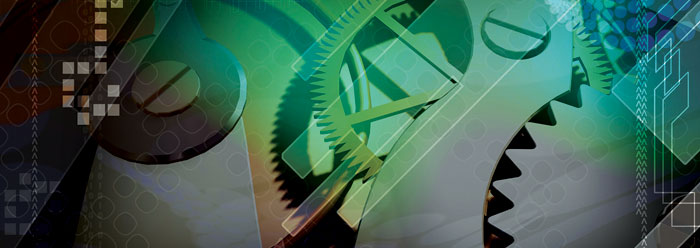Molecular biologist Michael Behe described a system made of several interacting parts, whereby the removal of one part would disrupt the functioning of the whole, as irreducibly complex. Both creation scientists and intelligent design proponents highlight examples of irreducible complexity in their studies. The very structure of these systems--with their interdependent parts working all together or not at all--demands design, not chance.
Nevertheless, a team of evolutionary molecular biologists think they may have refuted irreducible complexity. They recently studied the parts of a particular cellular machine involved in protein transport, claiming that it was actually reducible to its component parts.1
The researchers, led by Trevor Lithgow of Australia's Monash University, assert that since analogs of some of the parts of this molecular machine are found elsewhere, they could have assembled naturally when they were brought together at some time in the distant past.2 What originally appeared to be an irreducible system could now be considered reducible because proteins were found that look very similar to some of its parts, albeit engaged in different cellular activities.
However, these researchers misunderstand irreducible complexity. ID theorists have not claimed that a machine must have been designed merely because it has parts, but rather that an imaginary, not-yet-complete machine has no function, and is thus invisible to natural selection, making it "unevolvable." If it does not work, it confers no advantage to its organism, and therefore no occasion for its selection.
To circumnavigate this dilemma, the authors suggested a "core machine" assembly phase:
We proposed that simple "core" machines were established in the first eukaryotes by drawing on preexisting bacterial proteins that had previously provided distinct functions. Subsequently, and in a step-wise process in keeping with Darwinian evolution, additional modules would have been added to the core machines to enhance their function.1
Labeling this process as "preadaptation," they hypothesize that just the right components assemble themselves in just the right configuration. Also referred to as a form of "neutral evolution," one favorable reviewer reminds us that preadaptation "falls outside the descriptions of Charles Darwin."3
However, the very label "preadaptation" counters the authors' claims. The idea admits that not-yet-evolved "proto-machines" are not subject to Darwinian selection of adaptations. Preadaptation is observed nowhere; it is a devised assumption "in keeping with Darwinian evolution." The fact that non-functioning "machine parts" are invisible to Darwinian selection is exactly what design theorists have observed.
Brandon Keim wrote for Wired Science that "it requires only that existing components be repurposed," as if adding purpose to parts occurs simply and "naturally." Plans and purposes, however, are only known to arise from intelligent planners, never from mindless and chaotic laws of matter.
Preadaptation may be indistinguishable, in principle, from magic, and it was clearly invented to patch the gaping hole that separates Darwinian philosophy from scientific reality.
Instead of relying on unknown "self-organizing" principles and magical impossibilities to have constructed the living world, scientists can instead rely on Acts 4:24: "Lord, thou art God, which hast made heaven, and earth, and the sea, and all that in them is." Thus, a real, effectual, adequate Cause is responsible for irreducible molecular machines such as mitochondrial transport complexes.
References
- Clements, A. et al. 2009. The reducible complexity of a mitochondrial molecular machine. Proceedings of the National Academy of Sciences. Published online before print August 26, 2009.
- They found that certain α-proteobacteria possess proteins similar to Tim23, Tim44, and Tim14/Pam18. All three are required for the mitochondrial transport machine called TIM23. To convert these analogs into the real TIM23 parts, the chemicals they found would not only have to coalesce, but would require precise modifications and re-fitting according to a mitochondria-specific plan. Even then, the parts of another mitochondrial transport machine called TOM, without which TIM23 would be useless, are exclusively found fully formed in eukaryotes. The authors offer no suggestions on where TOM came from.
- Keim, B. More 'Evidence' of Intelligent Design Shot Down by Science. Wired Science. Posted on wired.com August 27, 2009, accessed August 30, 2009.
* Mr. Thomas is Science Writer at the Institute for Creation Research.
Cite this article: Thomas, B. 2009. Preadaptation: A Blow to Irreducible Complexity? Acts & Facts. 38 (11): 15.




